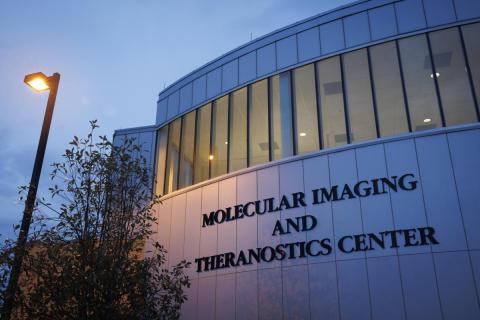On March 22, 2022, University of Missouri professor and researcher, Dr. Carolyn Anderson will accept the Glenn T. Seaborg Award for Nuclear Chemistry, a landmark achievement in the field. Though she described the accomplishment in humble terms (even saying that the scientist who nominated her may be more deserving), this award represents three decades of impressive—and often groundbreaking—work.
Dr. Anderson’s field had an interesting start. Following World War II, the Eisenhower administration made efforts to share non-military nuclear training and technology in fields like medicine and power generation. This program, called the Atoms for Peace Program, is responsible for the development of fission products for use in medical applications, including iodine-131. In the intervening 67 years since that program was introduced, this area has come a long way. Dr. Anderson’s research, which has its roots in that program, has centered around using radiometal-based agents for diagnostic imaging and cancer therapy. Her work at Mizzou’s Molecular Imaging and Theranostics Center combines diagnostics with therapeutics, hence of portmanteau of “theranostics.”
Anyone who has received a PET scan, which stands for positron emission tomography, has benefitted from the kind of research that Dr. Anderson and her team have been doing. A PET scan involves a drug, which can range in size from being a small molecule to a large protein, that contains a radioisotope. If the radiotracers collect at a higher level in one particular area of the body, this can indicate a disease since some diseases incorporate the targeted drug more than normal organs. These scans are now routine; around two million of them are performed in the United States each year. However, this was far from the case when Dr. Anderson got her start.
At that time, she said that these scans were only a research tool, which was due to the fact that the agents available were difficult to create. She explained, “Everybody was working with short-lived radionuclides that were cyclotron-produced. You had to produce them onsite and the one with the longest half-life was fluorine-18 at only two hours.” Her mentor, a pioneering radiochemist named Mike Welch, said that there were potentially many other radionuclides with longer half-lives that could be used. As an inorganic chemist, working on this project was right in Dr. Anderson’s wheelhouse, and so she worked to redesign a compound for copper-64, which has a 12.7 hour half-life.
“I feel like I’m one of the pioneers in developing ways to stably attach copper to biological targeting molecules and doing structure activity to understand the best way to chelate it.” – Dr. Anderson
This work provides for a number of different opportunities. As of last year, there is an FDA-approved copper-64 PET agent, and though Dr. Anderson’s lab didn’t invent this, she said it was something that her lab was working on over 20 years ago. As a leader at Mizzou’s Molecular Imaging and Theranostics Center, Dr. Anderson hopes to continue that work with the ultimate goal of developing radiometal-based agents to diagnose certain diseases and cancers, as well as targeted radiopharmaceutical therapy agents to treat melanoma and other cancers.
Glenn T. Seaborg, for whom the award is named, was a Nobel Prize recipient in chemistry and was responsible for many early discoveries of elements and isotopes that laid the groundwork for current research in nuclear medicine. Dr. Anderson stressed the importance of his contributions: “Not only did he discover neptunium and plutonium, but he also was the discoverer of technetium-99 and iodine-131, which are two of the main radionuclides in nuclear medicine. He is truly one of the most important people in our field.” Beyond his work as a scientist, he was also known for his kindness and humility. In the few times that Dr. Anderson met him, she recalled the little notebook he kept where he’d take notes, asking for someone’s name or where they were from. When people talked to him, she said, it was clear that he was intently listening.
On October 19, 2021, Dr. Anderson attended the opening of the Roy Blunt NextGen Precision Health building on the University of Missouri campus alongside community leaders, members of the scientific community, and students.
Much like the name “NextGen” implies, Dr. Anderson is currently focused on finding and supporting the next generation of scientists. “The University of Missouri has been a powerhouse in this area [of radiochemistry] since the 1970s, and I'm here to help train the next generation,” she said. Dr. Anderson also wants to work collaboratively across disciplines. “I’m trying to bring people together and hopefully not just work with each other in our field of theranostics, but also work with people in other cancer fields, as well as in neurology, neurobiology, and cardiovascular disease to have more of an impact.”
While the developments that will happen at both MITC and NextGen will take years, Dr. Anderson emphasized the importance of always looking forward to the future. “What we're doing today may not come to fruition for 20 to 30 years, but if people 20 or 30 years ago weren't working on what I was working on and what other people were working on, we wouldn't be saving the lives of people who have neuroendocrine tumors. It's always a pay-it-forward kind of approach. We do this work now so that we can make an impact in the future.” Given Dr. Anderson’s tremendous accomplishments to date, the future is looking bright.
